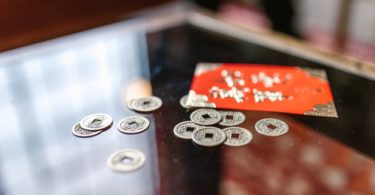The self-driving stock revolution has arrived.
About a hundred years ago, a Czech physician and novelist by the name of Miles J. Breuer offered up the idea of self-driving cars in his science-fiction book Paradise and Iron.
Since then, self-driving cars have been just that – a science fiction concept – and nothing more.
Until now… when self-driving cars are turning into a reality.
Do you live in Phoenix? Boston? Detroit? London? Berlin? Houston? Chances are high that if you live any major metro area, self-driving cars are being tested on the very roads you drive every day.
In Houston, for example, Domino’s is delivering pizza to your home via an autonomous vehicle from Nuro.
So… what’s behind the Self-Driving Revolution finally going from being an exciting science-fiction concept to becoming a disruptive reality?
One thing: LiDAR.
LiDAR are laser light perception sensors which give cars complete “vision.”
These sensors essentially beam out lasers to their surroundings. Those laser beams hit objects around the car, and then bounce back to the sensors. The sensors then either carefully measure the travel time of those laser pulses (called time-of-flight, ToF), or a change in frequency of the returning light wave (called Frequency Modulated Continuous Wave, FMCW), to create a proxy for distance.
Do this thousands of times in a 360-degree frame-of-view, and voila… you have a complete and dynamic “picture” of the surrounding environment.
Pretty cool, right? It is pretty cool – but it’s also traditionally been pretty expensive.
A Groundbreaking LiDAR Tech to Power Self-Driving Stocks
In fact, LiDAR sensors have been prohibitively expensive for self-driving applications at around $50,000 and up per sensor.
But those costs have collapsed recently – and now, LiDAR sensors are being sold for as little as $1,000, which means they can be cost-effectively and realistically integrated into cars.
The cost breakthrough of LiDAR technology is why the Self-Driving Revolution is finally kicking into gear. For the first time ever, cars can finally “see” the world on their own, because we finally gave them “eyes.”
But science is a journey, not a destination, meaning that what is being used in the LiDAR world today, likely won’t be the “final product” most consumers end up adopting in a few years.
For example, most of these LiDAR makers build their sensors on something called Time-of-Flight (or ToF) techniques, which have significant limitations.
Time-of-Flight LiDAR sensors essentially send out laser pulses and measure the time it takes for those pulses to return to the sensor. They use the “time of flight” as a proxy for distance.
While ToF LiDAR sensors are cool, they also provide a choppy signal that is open to ample interference and noise from sunlight photons and other lasers.
To be sure, ToF LiDAR makers are developing novel techniques to address these shortcomings – but their existence alone opens the door for an entirely new, groundbreaking technology to emerge and disrupt the LiDAR status quo.
Full story on InvestorPlace.com




Leave a Comment